TMAEG’s major environmental scheme, the Stream Project reached an important stage on Saturday 14th December when we took part in the national Big Tree Plant, a campaign by Defra and the Forestry Commission to plant some 150,000 trees across England between 2012 and 2015. The free trees provided under this scheme enabled us to carry out new planting along the length of the Ash Brook between Stone Hill and Downland. Allowing for the planning time involved at the start of the process, this event marks the culmination of two years’ work on this project and this web story seeks to couple our achievements on December 14th with a picture of where we stand after those two years.
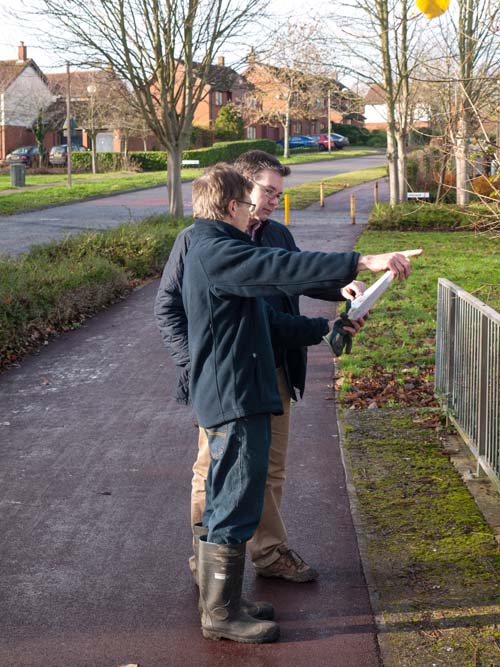
The Big Tree Plant
On our Big Tree Plant day, ten TMAEG volunteers planted a total of 43 one year old trees (whips) in nine locations along the Ash Brook. The trees are of ten species: English Oak, Hornbeam, Sweet Chestnut, Wild Cherry, Rowan, Hazel, Blackthorn, Guelder Rose, Alder and Crab Apple. Using ‘notch planting’, a spade is pushed hard into the ground and moved forward and backwards to create a void into which the delicate root structure of the young trees can be ‘swung’ and the tree positioned. The spade is then gently removed and the ‘turf’ reinstated around the stem of the new tree. Next, a plastic tubular protector is placed around it and a stake hammered into the ground to secure the tree and its protecting tube. Watering should then be carried out.
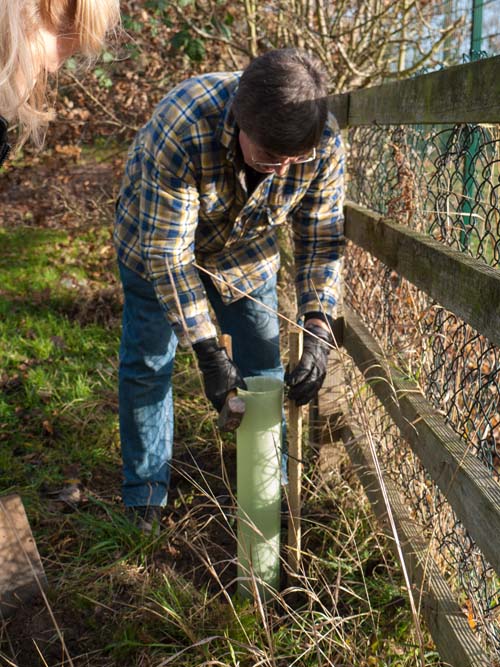
This work and several related tasks was largely completed by our three teams by 11-30 in time for a well deserved break with hot drinks and mince pies. At noon we were joined by our local MP, Iain Stewart who planted the final tree, an English Oak. Iain also visited several of the planting areas and talked to individual volunteers. These included those involved in the planting of native flower species, for example English Bluebells which have been grown and nurtured in the ‘home nurseries’ provided by several our members; thanks to Rosina and Daphne in particular.
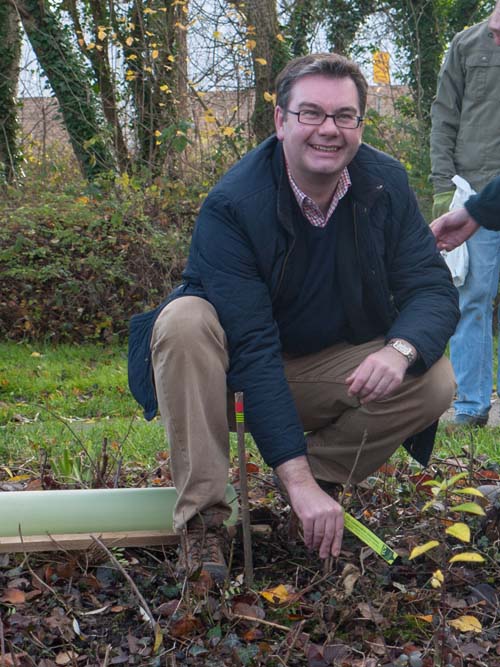
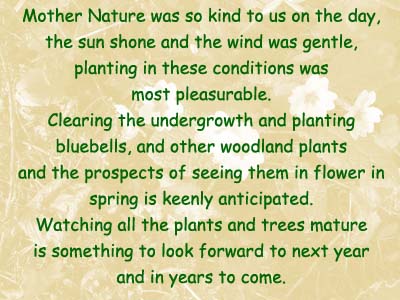
Two Years in the Making
We started our project in January 2012 with two days spent renovating the Stone Hill Pond. That was done in conjunction with the Green Gym, part of the national organisation The Conservation Volunteers (TCV) which provided us with the initial training and advice (From January 2014, this becomes a local group the Milton Keynes Green Gym led by TMAEG member Dave Barratt).
Based on this pilot scheme which secured a radical improvement to the pond and its immediate environment, we expanded our remit to follow the adjacent Ash Brook – into which the pond drains – all the way along its course to Downland. We have now completed 17 working sessions over four seasons, involving 30 of our members from Two Mile Ash, and a considerable number of Green Gym volunteers from outside the area. On one of those sessions we worked with the Neighbourhood Action Group and officers from Milton Keynes Council to do a comprehensive litter pick along the corridor. Our thanks are due to everyone involved.
Section by section
The Stone Hill Pond has now been worked on twice. In addition to an annual ‘dredge’ to remove fallen leaves and branches, volunteers have tidied up the surrounds, cutting back brambles and the lower layer of ‘shrubbery’ under the trees in the copse, and we have planted wildflowers on the far side of the pond from the path. Thus we have allowed more light to penetrate the pond area, benefitting wildlife as well as security, and we have added to the variety of plants present.
Also, working with Milton Keynes Council, we seem to have solved one of the two problems of the pond, its failure to fill up after rain; that was solved by a flushing out of the pipe which leads overflow water from a surface water drain close to the road. A second problem remains; that is of leakage from the bed of the pond which will need to be tackled if we are to maintain water levels throughout the year. But awareness is one thing, how best to stem or at least reduce the leakage is another.
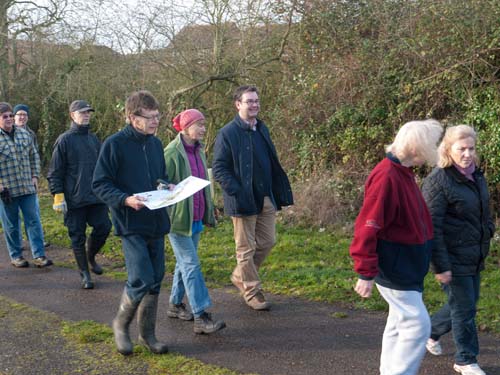
Pond to the High Street – during 2013, our volunteers have opened up four glades leading down to the stream bed. Wildflower seeds have been sown in several of these areas and (previously hidden) Spanish Bluebells revealed in one of them. Under the Big Tree Plant, three hazel trees were planted in the most recently created glade and foxglove plug plants put in around them. These are biennials and, if they ‘take’, these should appear in the spring of 2015.
Local Park – High Street to Play Area – A sizeable number of the work sessions have been devoted to this stretch of the stream corridor. This is a very varied section of hedgerow but in places it has been dominated by massive tangles of one species, the Bramble – to the extent that the stream bed was obscured from view for many years. Following much volunteer effort, most of that bramble mass has been removed; at the same time, along other stretches, bramble has been retained and is being managed as a bird habitat as well as for fruit picking. Blackthorn is another invasive plant; this has been cut back in places to give room for other species, but one whole stretch has been kept because of its wildlife value and the beauty of its dazzling white flowers in the early spring.
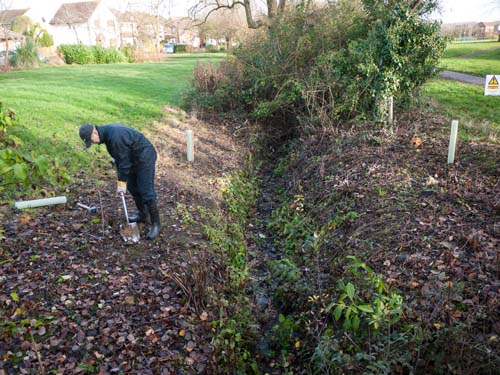
For the Big Tree Plant, 18 trees, including English Oaks were planted along this section. Six occupy a big gap near one of the bridges, where one of the major tangles of bramble was removed, while others have been inserted within the main body of the hedgerow. The Oaks should ultimately replace a large ash tree, the future of which must remain uncertain through the possible spread to Milton Keynes of ash die back disease. Among the other species, we have planted Sweet Chestnut, Hornbeam and Crab Apple trees which are newcomers to this stretch of hedge.
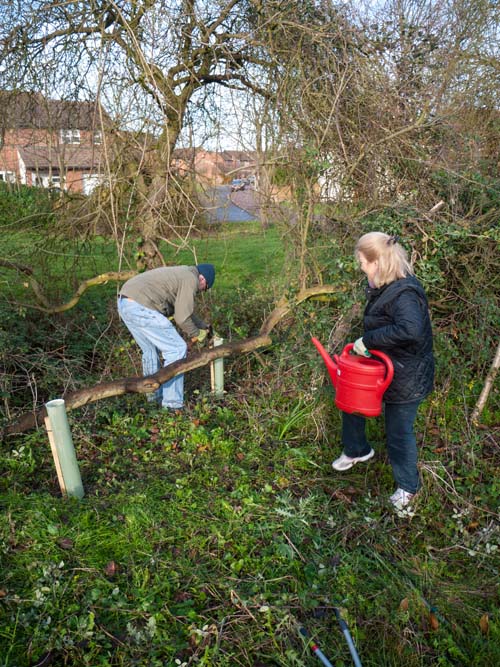
In parallel with the tree planting, we are developing a ‘Garden by the Bridge’ in which the steep bank down to the stream (by the Local Park entrance) is being cloaked with woodland and other wildflowers. Last April, we planted groups of English primroses on the lower parts of the slope; these were given to us by the City Discovery Centre as surplus plants from the grounds of Bradwell Abbey. On December 14th, one of our teams supplemented its planting of bluebells further up the slope with Ox-Eye Daisies and Greater Knapweed towards the path edge. As they mature and spread, these plants should provide a succession of flowering from April onwards and this should be very visible to passers by, both from the path into the Park and from the adjacent redway.
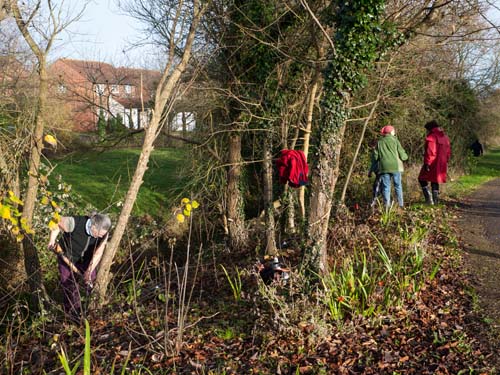
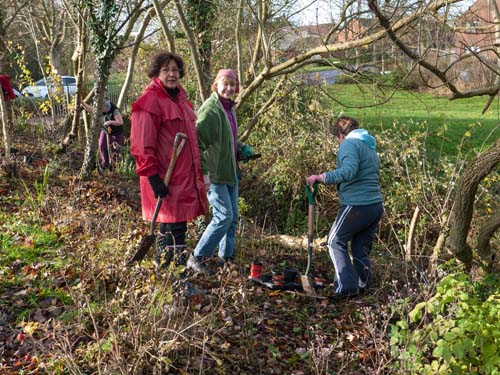
Another sizeable group of trees was planted to the immediate east of the play area. These will thicken out the present Willow and other planting along the stream bed and be particularly visible to users of the footpath link from Clay Hill. Our volunteers planted four tree species in this area. Closest to the stream they planted some Alders which are especially suited to wetter ground conditions. There are also several Rowans and Wild Cherries and examples of a medium sized tree the Hornbeam, the leaves of which resemble those of the beech but are slightly more pointed.
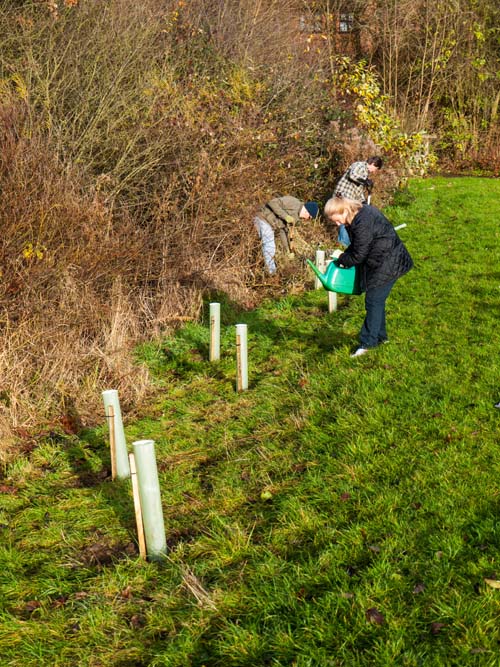
Clay Hill to Downland – this is the lower end of the stream corridor, a section that runs between the grounds of Two Mile Ash School and the playing field to the northwest. Here, TMAEG’s tree planting has been in three areas. In the first, three Blackthorns were planted at a bend in the hedgerow with the aim of introducing some spring variety and, in the second, a line of Guelder Roses were put in close to the point where the footpath bridges the stream close to Downlands; these supplement similar planting nearby. The third location is along the school boundary where two Oak trees have been planted in a gap.
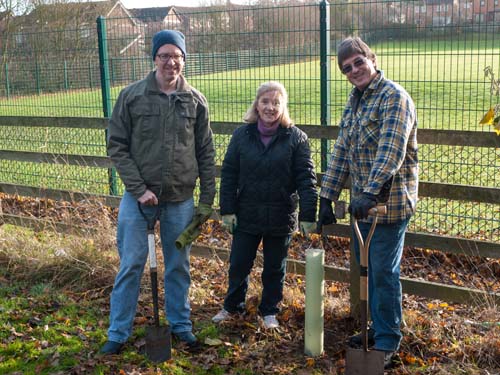
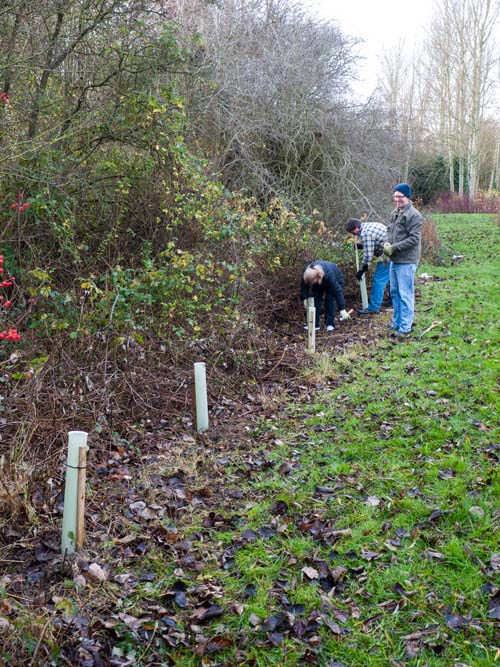
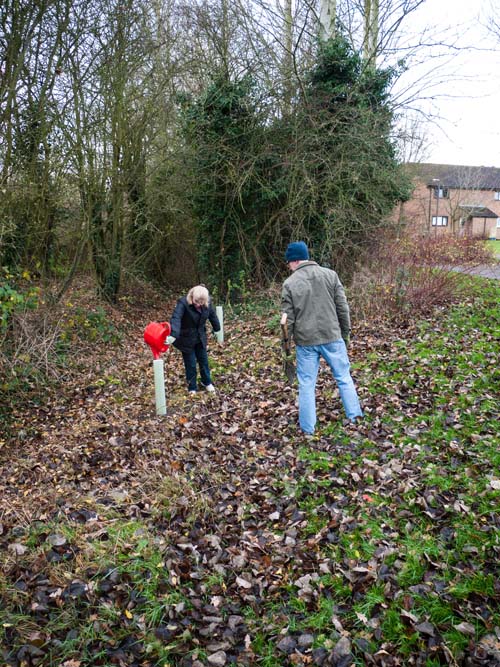
The Future
It is a condition of the Big Tree Plant that the trees should be properly maintained and we will do that over the coming years until they are established. Looking to 2014, we will schedule several maintenance days during which we will remove vegetation from around the trees which can otherwise compete with and slow their growth. We will also tend the new wild flowers, removing brambles and other plants which threaten to encroach upon them. Beyond that, we will need to review the success (or otherwise) of what we have done. That might lead perhaps to some further tree and wildflower planting. Another possibility will be to put up bird and bat boxes. What do TMAEG members think?
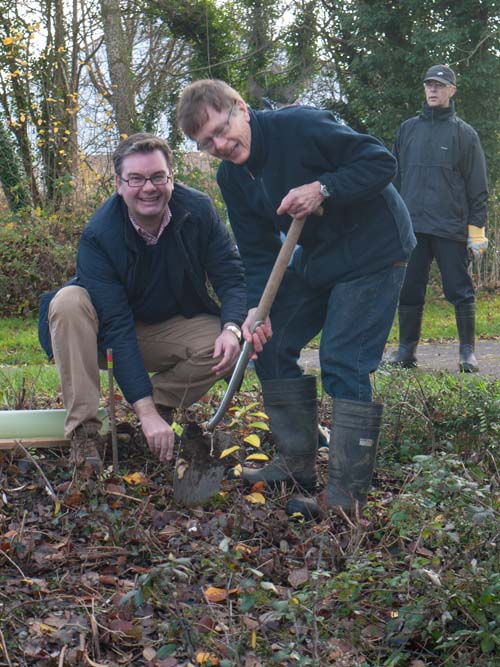
Our thanks to Dave Barratt for the photos of the Big Tree Plant